Different Types of PPE To Protect Against Workplace Hazards
March 17, 2022
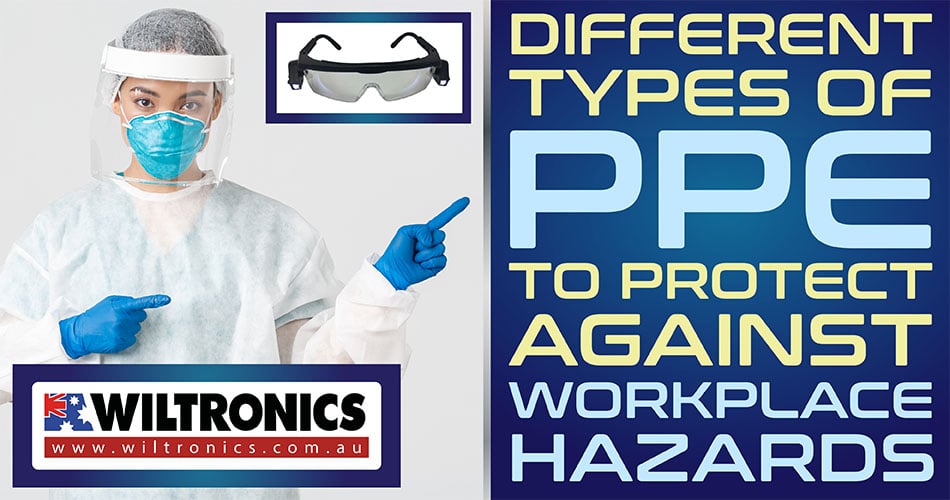
Let’s look at the different types of PPE that will protect you from workplace hazards.
Personal Protective Equipment (PPE) has been used in different forms throughout human history. This safety gear serves an important purpose, and that is to shield the human body from risks.
Yet, the significance of PPE was recognised more than ever when shortages stretched across the globe due to COVID-19. The pandemic has brought to light the vital role these items play to those that clock in on the front lines.
Since then, wearing PPE has become part of the ‘new normal’. This includes putting face masks on, which has been mandatory in many situations.
And with protective gears being one of the more valuable items during the pandemic, different types of PPE were introduced to the world.
This post aims to provide resources allowing you to classify various types of PPE – for general use. This way, you will know the safety precautions and how to adequately use/wear PPE.
The History of PPE
Early forms of PPE includes gloves. Gloves weren’t just a fashion statement, they could protect individuals hands in hazardous conditions.
Helmets also made their introduction for combat. Soldiers wore thick leathers to protect their heads from attacks. A variety of different types of armour have also been used in human conflicts.
By the early 1900s, surgical masks were used to prevent contamination of open surgical wounds.
Around the same time, the first type of respirator was devised to protect miners from dust and gas. They also protected soldiers from the introduction of chemical warfare in World War 1, and firefighters from smoke when fighting fires.
Simply put, PPE was originally invented and designed for body protection against risks. In science applications, it may also be referred to as laboratory safety equipment.
Fast forward to the present time, it goes a step further, especially in the medical industry. Not only does the equipment protect healthcare workers, but also it provides a clean, sterile environment for patients in need of care.
So, what are the popular forms or types of PPE that you see today? And why are they so important, particularly now?
What is PPE?
PPE stands for Personal Protective Equipment, PPE refers to protective clothing, including:
- Gloves
- Helmets
- Face masks
- Eye protection (goggles)
- Face shields
- Safety footwear
- Respirators
In other cases, disposable PPE may be provided, such as single-use coveralls. Throwaways are to be used once and by only one user, meaning they cannot be washed.
When worn properly, PPE creates a barrier between infectious materials and your body. For one, contaminants include blood or bodily fluids, and PPE has the potential in blocking their transmission.
Note: Employers have duties on providing and using these safety apparatus at work.
What does PPE not include?
- Ordinary working clothes or uniforms. These are not designed to provide the needed protection, unlike PPE.
- Equipment like a motorcycle or bicycle helmets. There is a specific helmet used in PPE, such as a medical cap and safety hard hat.
- Offensive weapons for self-defence or as deterrent equipment.
- Portable devices for detecting and signalling risks. This includes badges for detecting radiation or personal gas detectors.
The Importance of PPE
PPE exists as a preventive measure not only in the medical industry but also in manufacturing and more. It is most effective when it meets the correct size, fit and height of its user.
Below are the common reasons why it is crucial in the workplace, in general, to use PPE.
1. It keeps you from being liable for your injuries
Using the PPE provided by your company ensures that should an injury result, your employer will absorb full liability. Thus, you should never allow for exemptions from wearing PPE.
It is also vital that you are fully educated on which equipment is required for which tasks and what it is meant to protect.
2. You only have one pair of eyes
Safety glasses are one of the most effective forms of PPE. Any substance (corrosive or not) and material (sharp or not) can be hazardous to the eyes.
Safety glasses or goggles are an ideal form of protection as they act as a shield. Wearing one can prevent particles from entering your eyes. This allows you to carry on with your work.
There are different types of PPE eyewear available for different situations. You will find a model intended for medical use, manufacturing, or construction jobs.
3. It helps you protect from transmittable pathogens
PPE protects healthcare workers from virulent pathogens. It shields the body from bodily fluid and respiratory droplets exposures.
When worn correctly, PPE helps protect both front liners and patients from transmittable pathogens. This strategy becomes especially important when there no cure has been developed for an illness.
Different Types of PPE
PPE is classified into five categories. Each includes its own corresponding safety equipment.
1. Eye and face protection
Eyewear protection helps reduce the risk of exposure to chemical splashes, laser radiation, and flying debris. There are various types of eye and face protection, and each has its own limitations.
- General safety glasses. Offers a minimum level of eye protection and is worn in the laboratory. A mush-have side shield, a one-piece lens that wraps around the temple. Safety glasses are not, however, effective in protecting the eyes from splashes. Recommended for use with solutions, such as buffers and salts.
- Laser safety glasses. The selection is based on the laser wavelength and power. Protective properties can be found printed on the eyewear. Not as effective as laser safety goggles at filtering all light entering the eyes.
- Chemical splash goggles. Ideal use for experiments with splashing of chemicals or infectious substances that could reach the eyes. Can act as impact goggles to prevent flying debris.
- Impact goggles. Can only offer protection from flying debris. They often have ventilation holes on the sides, rendering the user susceptible to chemical splashes and dust.
- Face shields. Required to wear when splashes from chemicals can cause immediate skin damage. This includes working with concentrated acids, dispensing liquid nitrogen, to name a few. Face shields are also used to protect your eyes, nose, mouth and face from flying objects and liquids. Note they are not a good substitute for face masks as they do not offer the same protection against COVID-19.
Check out our offers below to complete your collection of PPE must-haves in no time!
Safety Glasses with LED Lights – Battery Operated
Product code: JTH3000 (no longer available)
Perfect for DIY, construction, home improvements, or any activity needing LED lighting. Features individually switched and swivelled LED modules for the ideal position.
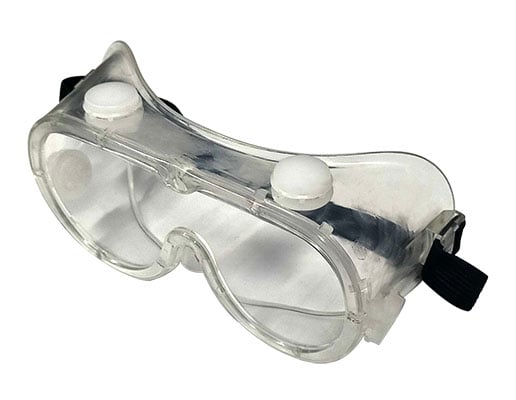
Safety Splash Goggles / Vented Anti-Fog
Product code: LS0540
These Safety Splash Goggles have indirect venting to protect against chemical splashes. Made from polycarbonate PC, the lenses provide protection from medium impact.
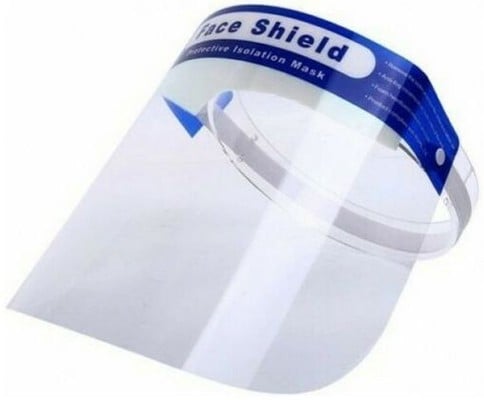
Direct Splash Protection Face Shield
Product code: LS0575
A fully transparent protective mask that is anti-fog and anti-splash. It is light and comfortable to wear, effectively protecting your entire face. It has a foam headband that relieves pressure.
2. Hand protection
Gloves are essential to protecting hands. They should only be used under the specific conditions for which they are designed. For one, no glove is resistant to all chemicals.
Moreover, gloves degrade over time. Thus, you should replace them as necessary to ensure adequate protection.
- Light latex, vinyl or nitrile gloves. Disposable latex works well with biological hazards. Meanwhile nitrile provides protection from biological hazards and chemical splash hazards. At last, vinyl works with biological hazards, BSL1, BSL2, BSL2+, BSL3.
- Light chemical resistant gloves. Can work with small volumes of corrosive liquids, organic solvents, flammable compounds.
- Heavy chemical resistant gloves. Can work with large volumes of organic solvents and hazardous material spills.
- Insulated gloves. Can work with hot liquids and equipment, open flames, water bath, oil bath.
- Wire mesh gloves. Ideal with live animals and when exposed to potential cuts.
Our range of disposable gloves is perfect for examination and dissection purposes. Boxes of 100 in latex, nitrile, and vinyl.
3. Body protection
A variety of laboratory coats is necessary for certain lab projects. There are three common types ideal for PPE use.
- Traditional. This includes a cotton/cotton-polyester blend. Ideal for general use, such as chemical, biological, radiation, and physical hazards.
- Flame resistant. This includes Nomex and other flame-resistant cotton. Works well with water/air reactive chemicals, large volumes of organic solvents, and potentially explosive chemicals.
- Barrier. Predominantly polyester. Great for working with infectious materials.
If you are looking for a traditional lab coat for general use, we have one for sale!
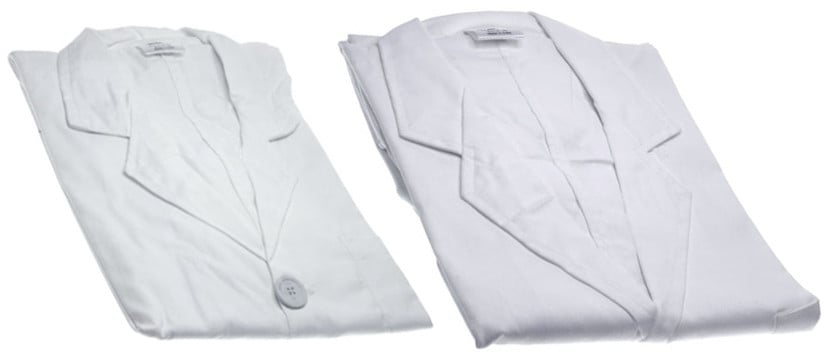
Lab Coat
Product code: LS13xx
This educational grade Terylene cotton lab coat is perfect for classroom use! The Terylene cotton mix makes the coat durable and hard-wearing for even the busiest lab. Available in small, medium and large.
4. Respiratory protection
Proper fitting and use of face masks is key to respirator efficacy. Face masks combined with preventive measures can help slow the spread of COVID-19. Protective measures include getting vaccinated, frequent hand-washing and physical distancing.
- Surgical face masks. Wearing one helps protect against large droplets and splashes. Ideal for COVID-19 prevention. They do not require fit-testing.
- N-95 respirators. Helps protect against dust, fumes, mists, and microorganisms. Ideal for COVID-19 prevention. Requires fit-testing.
- Half-mask respirators. Helps protect against a variety of particulates, vapours, dust, mists, and fumes. Usually depends on the filter cartridge used. Requires fit-testing.
- Full-face respirators. Same as half-mask but with greater protection factor. Requires fit-testing.
- Respirator cartridges. For use in half-mask respirators and full-face respirators.
Check out below our available face masks.
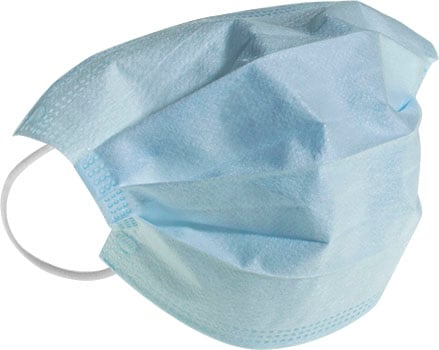
Face Mask – Antibacterial, Disposable, 3 Layer
Product code: LS1358
These handy disposable, antibacterial face masks are CE and FDA approved. Made of three-layer non-woven fabric that meets EN149 standards.
Protect yourself in comfort with these easily breathable face masks. Not for surgical use.
5. Hearing protection
It is advisable that all laboratory personnel use hearing protectors. And they should be made available to workers by the supervisors. Plus, training on the fitting, use and care of these devices is crucial.
There are three common types of hearing protection: disposable earplugs, reusable earplugs, and hearing bands. All are ideal when working in areas where sound levels average over 85 dBa.
Different Types of PPE: The Bottom Line
PPE has come a long way since the earliest days of its conception. Even so, these protective gears always have the same basic concept of keeping workers safe in a hazardous environment.
Whether it is for fighting ongoing fires or working on the front lines in hospitals, PPE helps save lives, including those around you. We hope this list has given you guidance and general information about the different types of PPE.
© Electrotech Brands Pty Ltd 2022


Write a Comment
You must be logged in to post a comment.